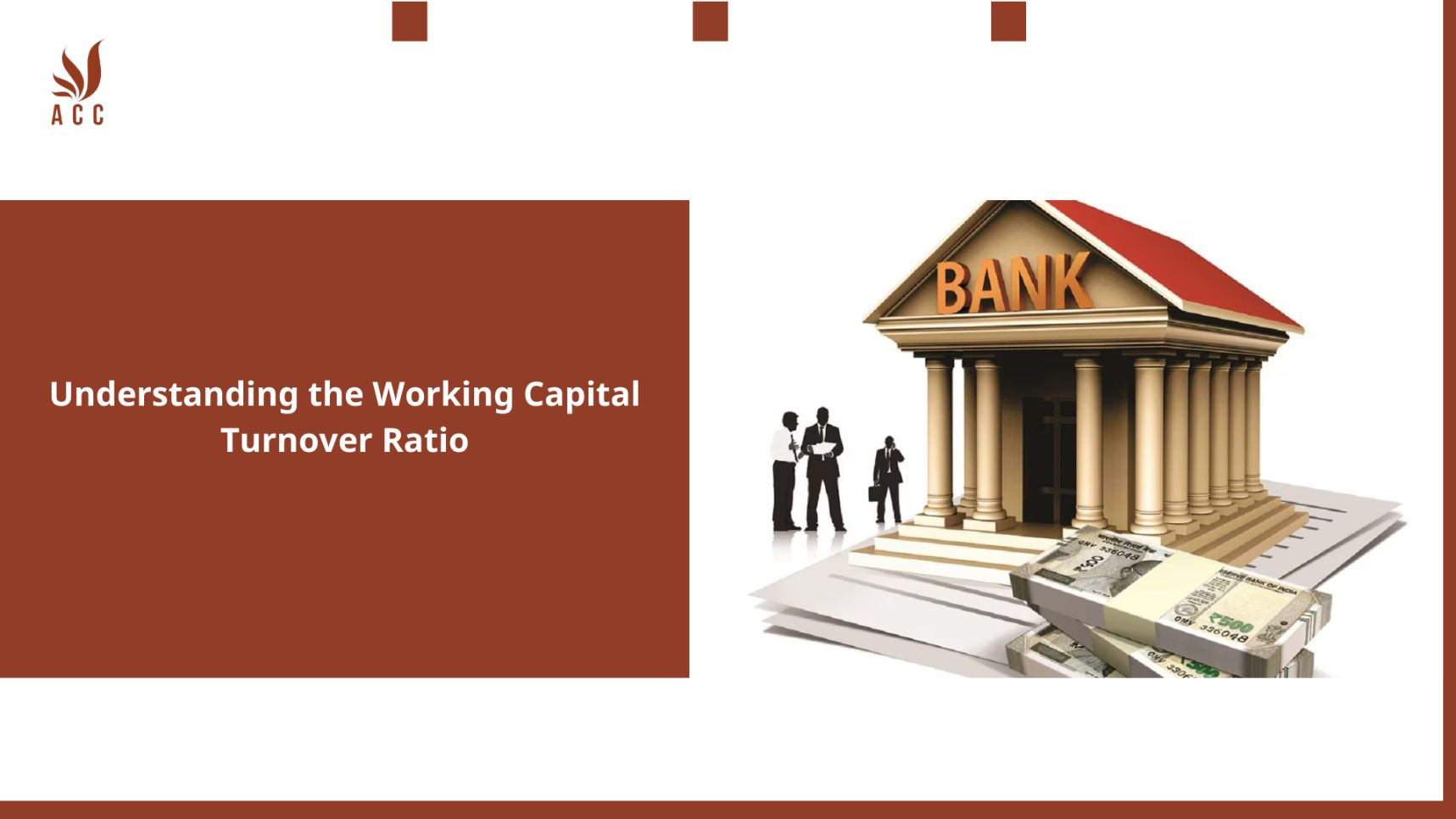
1. Understanding the Working Capital Turnover Ratio
In the dynamic world of business, optimizing efficiency is the key to success. One crucial metric that can provide valuable insights into a company's efficiency is the Working Capital Turnover Ratio. This article delves into the significance of this ratio, its formula, and how to interpret it to enhance your financial performance.
2. Key Takeaways
Unveiling Efficiency: The Working Capital Turnover Ratio Demystified
The Working Capital Turnover Ratio serves as a compass for assessing a company's adeptness in utilizing its working capital during day-to-day operations. This ratio is calculated by dividing net sales by the average working capital, and it can be a game-changer for your business strategy.
Maximizing Returns: A Higher Ratio, A Bigger Win
A higher Working Capital Turnover Ratio signifies that your company generates more revenue per unit of working capital. In simpler terms, it's like squeezing every drop of juice from a fruit. When your current assets exceed your current liabilities, you're in the green zone with positive working capital.
The Path to Improvement: Strategies for Enhancing Your Ratio
If your Working Capital Turnover Ratio is on the lower side, there's no need to despair. You can enhance it by focusing on inventory management and debtor/credit management. This not only boosts your revenue but also equips you with valuable insights for future purchasing and sales strategies, resulting in better financial performance and resource utilization.
3. Demystifying the Working Capital Turnover Ratio Formula
The formula for calculating this essential ratio is as simple as it gets. Divide your company's sales by your company's working capital:
Working Capital Turnover Ratio Formula = Sales / Working Capital
4. Interpretation: Deciphering the Numbers
To master the art of interpreting the Working Capital Turnover Ratio, you need to understand the two vital components involved: sales (or turnover) and your company's working capital. The working capital is essentially the difference between your current assets and current liabilities.
5. Real-Life Examples
Let's illustrate the concept further with some real-world examples:
Example 1: Unraveling the Ratio
Imagine we're dealing with a hypothetical company, Company A. Their sales for a specific period amount to $4,000.
6. Relevance and Use
A higher Working Capital Turnover Ratio is akin to having a high-octane engine for your business. When your current assets surpass your current liabilities, your working capital turns green, signifying efficient resource management. But it's not just about the numbers; you need to dig deeper. Analyze whether the ratio is high due to excessive inventory or if it's a result of how you manage your debtors or creditors, who supply your raw materials or purchase your finished products. Additionally, it's essential to compare your working capital ratio with industry standards for a comprehensive assessment.
7. FAQs: Navigating the Complexities
Can the Working Capital Turnover Ratio be Negative?
Yes, it can. A negative Working Capital Turnover Ratio occurs when a company's sales revenue falls short of its average working capital during a specific period. This could indicate inefficiency in working capital utilization or potential liquidity concerns, as the company is generating less revenue than the funds tied up in its current assets.
Is the Working Capital Turnover Ratio a Profitability Ratio?
No, it's not. The Working Capital Turnover Ratio focuses on efficiency, measuring how effectively a company utilizes its working capital to generate sales revenue. Profitability ratios, on the other hand, assess a company's overall profitability by comparing earnings with sales, assets, or equity.
What Are the Limitations of Working Capital Turnover?
This ratio doesn't directly reflect profitability and is sensitive to fluctuations in sales and working capital levels. So, it may not provide an accurate picture of a company's performance during volatile periods.
8. Recommended Reading
This article has been your guide to mastering the Working Capital Turnover Ratio. We've discussed how to calculate it, its significance, and even provided real-world examples. If you're eager to delve deeper into the realm of accounting, check out the following articles for more insights and downloadable Excel templates:
- [Working Capital Turnover Ratio Formula Excel Template](link to the Excel template)
- [Exploring the World of Financial Efficiency](link to related articles)
9. Why should professionals use ACC Law Firm's capital Service?
-
Expertise in Legal Matters: ACC Law Firm specializes in legal services, providing professionals with access to experienced attorneys who can offer valuable legal guidance. Whether it's contract negotiations, intellectual property issues, employment matters, or any other legal concern, their expertise can be invaluable.
-
Tailored Legal Solutions: ACC Law Firm understands that every professional's needs are unique. They can customize their legal services to address the specific challenges and opportunities faced by professionals in different fields.
-
Risk Mitigation: Legal issues can pose significant risks to professionals and their businesses. ACC Law Firm can help identify and mitigate these risks, reducing the potential for costly legal disputes or compliance issues.
-
Resource Optimization: Professionals can save time and resources by outsourcing their legal needs to ACC Law Firm. This allows them to focus on their core competencies and business objectives, while leaving legal matters in the hands of professionals.
-
Access to a Network: ACC Law Firm may have a network of legal experts and professionals in various fields, which can be beneficial for clients seeking connections and advice beyond just legal services.
Q&A
Question 1: What is capital, and how is it defined in economics and finance?
Answer 1: Capital, in economics and finance, refers to financial assets or resources that individuals, businesses, or governments use to generate income, invest, or fund various economic activities. It encompasses money, equipment, property, and other valuable assets.
Question 2: What are the main types of capital that play a role in the economy?
Answer 2: The main types of capital include:
- Financial Capital: Money and assets used to finance operations or investments.
- Human Capital: The skills, knowledge, and expertise of individuals.
- Physical Capital: Tangible assets like machinery and infrastructure used in production.
- Social Capital: The value derived from social networks, relationships, and interactions that can influence economic outcomes.
Question 3: How does the concept of capital impact economic growth and development?
Answer 3: Capital is a critical driver of economic growth and development. It enables businesses to expand, create jobs, and drive innovation. Access to capital, both financial and human, fosters productivity and improves living standards in a society. Investments in physical and social capital contribute to a nation's overall development.
Question 4: What role does capital allocation play in business and financial decision-making?
Answer 4: Capital allocation is the process of distributing resources among various projects or investments. It plays a crucial role in business and financial decision-making by determining where to invest capital to maximize returns and achieve strategic objectives. Effective capital allocation is vital for achieving long-term financial success and sustainability.
Nội dung bài viết:






Bình luận